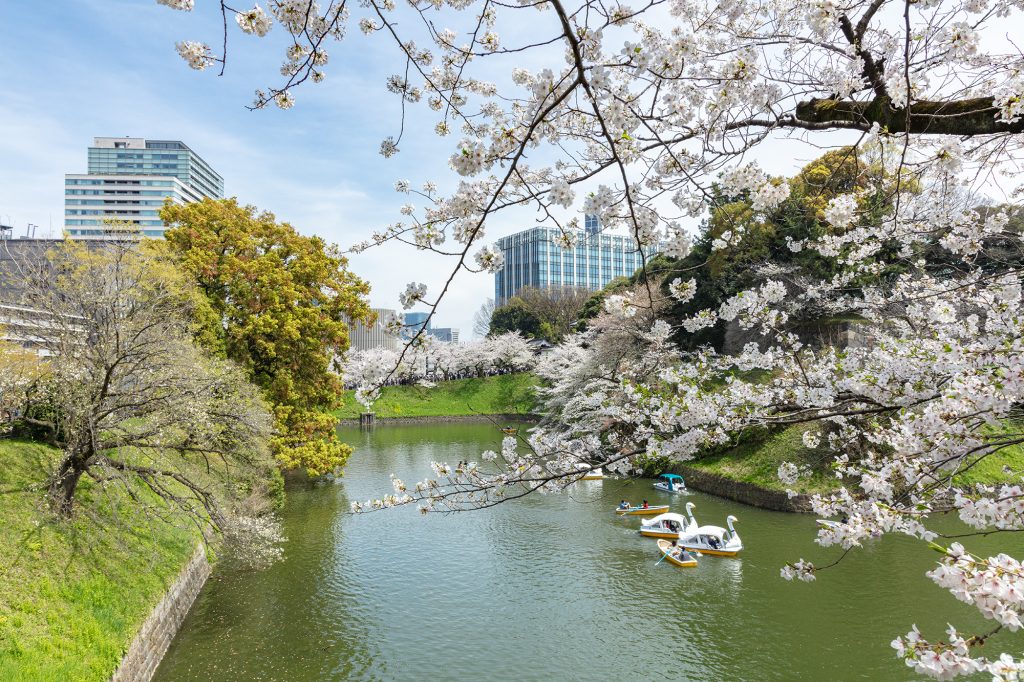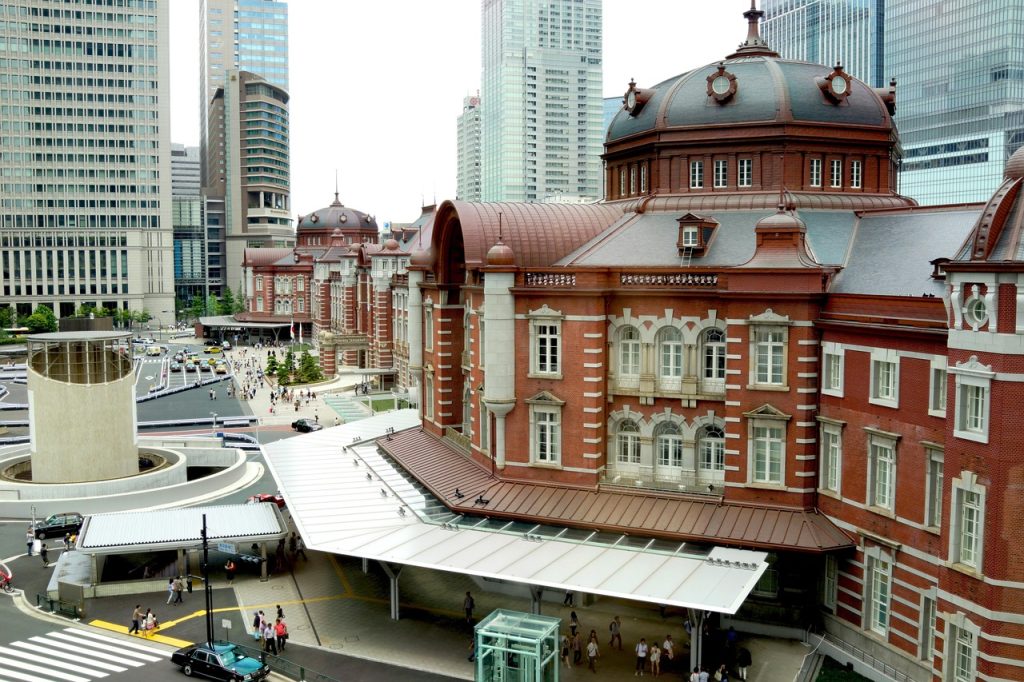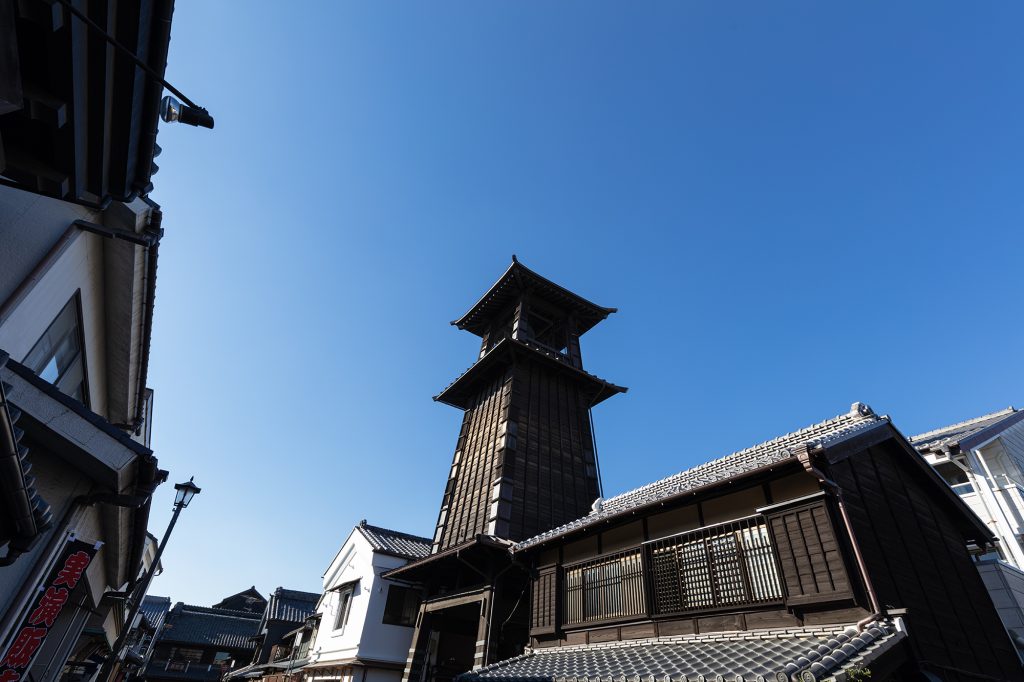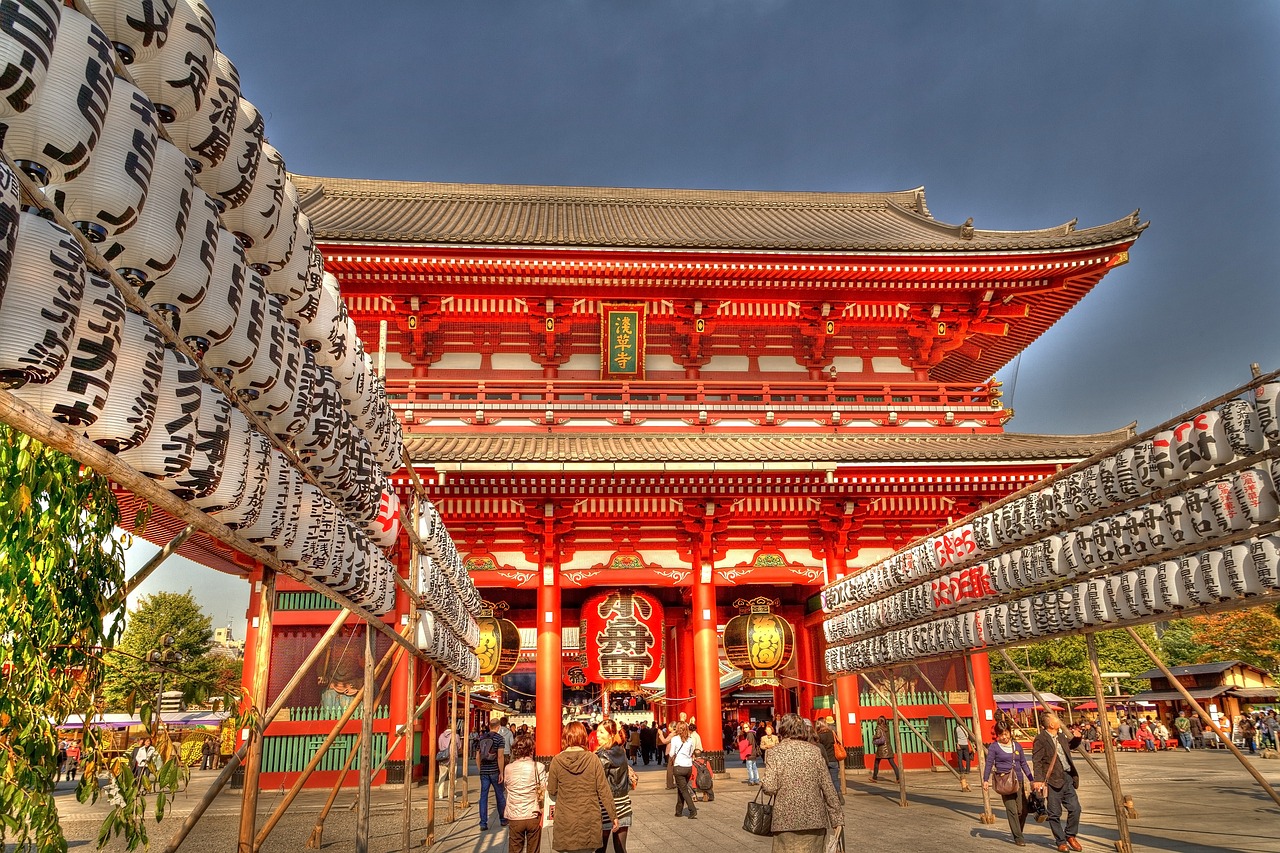Complete Guide to Buying Real Estate in Japan for Foreigners
Chapter 1: Essential Knowledge Before Buying
1.1 Can Foreigners Buy Property in Japan?
Foreigners can purchase real estate in Japan with almost no restrictions.
Nationality or visa type generally does not affect property ownership. However, buying property does not automatically grant residency.
1.1.1 Legal Background
- Japanese law imposes minimal restrictions based on nationality.
- Ownership rights for land and buildings are treated the same as for Japanese citizens.
- Exceptions: agricultural land and areas near military facilities.
1.1.2 Key Points for Foreign Buyers
- Purchasing property does not automatically grant a visa.
- Long-term residence requires a separate visa.
- Expect to budget 5–10% extra for fees and taxes on top of the property price.
1.2 Types of Ownership: Freehold (Shoyuken) vs. Leasehold (Shakuchiken)
| Ownership Type | Overview | Advantages | Disadvantages |
|---|---|---|---|
| Freehold (Shoyuken) | Full ownership of land and building | Long-term investment, free to sell or renovate | Higher upfront cost, subject to property tax |
| Leasehold (Shakuchiken) | Own the building, lease the land | Lower initial cost in urban areas | Land rent, possible resale restrictions |
1.2.1 Freehold (Shoyuken) Features
- Full ownership of both land and building.
- Freedom to sell, rent, or renovate.
- Subject to fixed asset tax and city planning tax.
1.2.2 Leasehold (Shakuchiken) Features
- Land is owned by a landlord; only the building is owned.
- Pay land rent (chidai) regularly.
- Check renewal terms carefully when the lease expires.
1.3 Buying Does Not Equal Residency
- Owning property does not grant a visa.
- Tourist stays are typically limited to 90 days.
- Required visas for living in Japan:
- Work visa
- Spouse visa
- Permanent residency
1.4 Purchase Costs and Taxes
1.4.1 Example: ¥40,000,000 Used Condominium
| Cost Item | Description | Approx. Amount |
|---|---|---|
| Agent Fee | Max 3% + ¥60,000 + tax | ¥1,386,000 |
| Stamp Duty | On purchase contract | ¥10,000 |
| Registration Tax | Ownership transfer registration | ~¥800,000 |
| Judicial Scrivener Fee | Legal registration | ¥100,000–150,000 |
| Acquisition Tax | Paid 3–6 months after purchase | ~¥1,200,000 |
| Other | Insurance, bank fees, etc. | ~¥50,000 |
Total: ~¥43,556,000
Chapter 2: Property Prices and Budget Reality
2.1 Average Property Prices by Region
| City | Avg. Price per m² | Avg. Price Example (70㎡) |
|---|---|---|
| Tokyo | ¥1,402,960 | ~¥98,207,200 |
| Kyoto | ¥800,000 | ~¥56,000,000 |
| Osaka | ¥613,333 | ~¥42,933,310 |
| Fukuoka | ¥842,500 | ~¥59,000,000 |
- Central locations are expensive; suburbs more affordable.
- Freehold costs rise in high-value land areas.
2.2 New vs. Used Properties
- New: higher initial cost, better facilities & earthquake resistance.
- Used: lower price, but renovation costs may apply.
Example
- New Tokyo condo (70㎡): ¥120,000,000
- Used in same area: ¥75,000,000 + renovation ¥15,000,000
2.3 Land vs. Building Costs
- Land: retains value over time.
- Building: depreciates, especially after 30 years.
Chapter 3: Choosing the Right Property
3.1 Area Selection
| Criteria | City Center | Suburbs | Rural |
|---|---|---|---|
| Transport | High | Medium | Low |
| Price | High | Medium | Low |
| Future Value | High | Medium | Low |
| Rental Demand | High | Medium | Low |
- Tokyo, Yokohama, Osaka: long-term investment-friendly.
- Suburbs: good for families.
- Rural: cheap but low liquidity.
3.2 Housing Types: Pros & Cons
- Condominium: Management fees, but secure and convenient.
- Detached house: More freedom, higher maintenance cost.
- Kominka (traditional houses): Cultural value, high renovation cost.
3.3 Building Structure & Earthquake Resistance
- Buildings after 1981: meet new seismic standards.
- After 2000: improved earthquake/fire resistance.
- Buildings 30+ years: plan for repairs & equipment replacement.
Chapter 4: Step-by-Step Buying Process
4.1 Choosing a Real Estate Agent
- Check bilingual support.
- Experience with foreign buyers is a plus.
- Maximum agent fee: 3% + ¥60,000 + tax.
4.2 Property Viewing & Pre-Contract Preparation
- Inspect structure and equipment.
- Review Important Matters Explanation (typically 20–100 pages).
4.3 Contract & Deposit
- Pay 5–10% deposit when signing the contract.
- Generally non-refundable after signing.
4.4 Handover & Registration
- Judicial scrivener handles registration.
- Final payment → official ownership transfer.
Chapter 5: Financing & Mortgages
5.1 Japan’s Mortgage System
- Permanent residents: same terms as Japanese citizens.
- Non-permanent residents: limited banks & stricter conditions.
Example Banks for Foreigners
| Bank | Permanent Residency Required? | Features |
|---|---|---|
| SMBC Trust Bank | No | English support, income requirement ~¥5,000,000 |
| SBI Shinsei Bank | No | Income ~¥3–5 million, online application |
| Tokyo Star Bank | No | Flexible case-by-case |
5.2 Approval Criteria
- Work history in Japan: 1–3 years.
- Down payment: 20–50%.
- Japanese spouse or guarantor helpful.
Chapter 6: Post-Purchase Management, Taxes & Future Planning
6.1 Taxes and Maintenance Fees
| Item | Description | Typical Cost |
|---|---|---|
| Fixed Asset Tax | Annual tax on property | ~1.4% of assessed value |
| City Planning Tax | Local planning tax | 0.2–0.4% of assessed value |
| Management Fee | Condo common areas | ¥15,000–30,000/month |
| Repair Reserve | Major repairs | ¥10,000–30,000/month |
6.2 Management for Overseas Owners
- Hire property management company.
- Bank/utility payments can be handled remotely.
- Emergency response can also be delegated.
6.3 Future Planning
- Rental: calculate yield in urban vs. regional properties.
- Resale: prioritize areas with appreciating land.
- Inheritance: non-resident owners need a tax agent in Japan.
Summary
- Japan’s real estate market is open to foreign buyers.
- Key challenges: financing, taxes, and maintenance costs.
- Building a team of professionals (agent, judicial scrivener) is crucial.
- Buying property is a planned investment and lifestyle choice, not just a dream.

Chapter 2: Step-by-Step Process of Buying Real Estate in Japan
Purchasing property in Japan follows a well-structured legal and procedural framework. While the steps are relatively straightforward, the process may feel complex for foreign buyers due to language barriers, legal documentation, and cultural differences in business negotiations. This chapter provides a clear, step-by-step roadmap, including flowcharts, tables, and practical advice.
2-1. Overview of the Purchase Process
The real estate transaction in Japan can be divided into seven major stages:
[1. Property Search] → [2. Property Viewing & Due Diligence] →
[3. Offer & Negotiation] → [4. Signing of Sales Contract] →
[5. Loan Application (if applicable)] → [6. Settlement & Final Payment] →
[7. Registration & Handover]
Each step involves specific documentation, costs, and legal obligations.
2-2. Step 1: Property Search
2-2-1. Where to Find Properties
Foreigners can search through several channels:
- Real Estate Agents: Licensed brokers (fudōsan-ya) who provide property listings and handle negotiations.
- Online Platforms: Suumo, Homes, Rakumachi, Realestate.co.jp (English-friendly).
- Auctions: Judicial property auctions (keibai), often discounted but require careful legal due diligence.
- Developer Sales: For new condominiums, directly from developers.
2-2-2. Choosing the Right Agent
- Verify license with the Ministry of Land, Infrastructure, Transport, and Tourism (MLIT).
- Look for English-speaking or international-oriented agencies.
- Clarify commission fees (typically up to 3% of property price + ¥60,000 + tax).
2-3. Step 2: Property Viewing & Due Diligence
2-3-1. Property Viewing
- Apartments: Inspect building age, management system, reserve fund balance, earthquake resistance (taishinstandards).
- Houses: Check structural condition, roof, plumbing, earthquake resistance.
- Land: Confirm zoning restrictions, building coverage ratio (建ぺい率), and floor area ratio (容積率).
2-3-2. Legal Due Diligence
The buyer’s agent and judicial scrivener (shiho shoshi) verify:
- Title deed (ownership record)
- Existing mortgages or liens
- Land-use zoning
- Building code compliance
2-4. Step 3: Offer & Negotiation
2-4-1. Submitting an Offer (Kaitsuke Shomeisho)
- Written offer to purchase, including price and conditions.
- Usually accompanied by a small deposit or earnest money (shokikin).
2-4-2. Negotiation Points
- Final purchase price (discounts possible, especially for second-hand properties).
- Inclusion of furniture or appliances.
- Handover timing.
- Responsibility for minor repairs.
2-5. Step 4: Signing of Sales Contract (Keiyaku)
Once an agreement is reached, both parties sign a legally binding Real Estate Sales Contract.
2-5-1. Important Documents
- Contract (baibai keiyaku sho)
- Important Matters Explanation (jūyō jikō setsumeisho), explained by a licensed agent
- Stamp duty (ranging from ¥10,000–¥100,000 depending on property price)
2-5-2. Deposit Payment
- Buyer usually pays 10% of purchase price as deposit (tetsukekin).
- If buyer cancels later, deposit is forfeited.
- If seller cancels, they must pay back double.
2-6. Step 5: Mortgage Application (Optional)
Foreigners may apply for a housing loan if eligible.
2-6-1. Requirements
- Stable income in Japan
- Medium-to-long-term visa (work visa, spouse visa, or permanent residency preferred)
- Down payment (usually 10–20%)
2-6-2. Typical Loan Conditions
| Bank Type | Interest Rate | Max Term | Down Payment | Notes |
|---|---|---|---|---|
| Japanese Megabanks (Mitsubishi UFJ, SMBC) | 0.5–1.5% | Up to 35 yrs | 10–20% | Harder for non-residents |
| Regional Banks | 0.8–2.0% | Up to 30 yrs | 20% | Sometimes flexible with local ties |
| Foreign Banks (HSBC, etc.) | 1.5–3.0% | 20–25 yrs | 30–40% | Limited availability |
2-7. Step 6: Settlement & Final Payment
On the agreed date:
- Buyer pays the balance (purchase price minus deposit).
- Taxes, fees, and insurance are also settled.
- Seller transfers keys and property rights.
- Transaction usually takes place at the bank in the presence of:
- Buyer & seller
- Real estate agent
- Judicial scrivener
- Bank representative (if mortgage is used)
2-8. Step 7: Registration & Handover
- Judicial scrivener registers ownership transfer with the Legal Affairs Bureau (Hōmukyoku).
- Buyer receives the property registration certificate (tōki jiko shōmeisho).
- Utilities and property management contracts are transferred to the new owner.
2-9. Flowchart: Timeline of a Typical Transaction
Day 1–30: Property Search → Viewing → Due Diligence
Day 30–45: Offer & Negotiation
Day 45–60: Contract Signing + Deposit Payment
Day 60–90: Loan Application & Approval (if applicable)
Day 90–120: Settlement & Ownership Transfer
⏳ Total time required: around 2–4 months.
2-10. Common Pitfalls & How to Avoid Them
| Pitfall | Why It Happens | Solution |
|---|---|---|
| Assuming ownership grants visa rights | Misunderstanding of immigration law | Consult with immigration lawyer separately |
| Underestimating total costs | Forgetting taxes & fees | Budget 5–10% extra |
| Language barrier | Contracts only in Japanese | Hire bilingual agent or translator |
| Mortgage rejection | Short visa or unstable income | Consider cash purchase or larger down payment |
| Buying rural property without due diligence | Hidden repair or zoning issues | Always conduct full inspection and legal check |
2-11. Summary Checklist
Before moving forward with a purchase:
- ✅ Work with a licensed and preferably bilingual real estate agent
- ✅ Verify title deed and land-use restrictions
- ✅ Understand contract terms and cancellation rules
- ✅ Budget for taxes, fees, and deposits
- ✅ Prepare visa and financial documents for mortgage (if applicable)
- ✅ Hire a judicial scrivener to handle registration

Chapter 3: Financing Options for Foreign Buyers in Japan
For many foreign buyers, purchasing real estate in Japan with cash only is not always feasible. Fortunately, Japan has a mature and reliable mortgage market, but financing for foreigners comes with specific eligibility requirements, restrictions, and practical challenges. Understanding these differences is essential before beginning the buying process.
3-1. Overview: Cash vs. Financing
Foreign buyers typically choose between:
- Cash Purchase
- Fast, simple, no bank involvement.
- Attractive to sellers (reduces risk of cancellation).
- Avoids mortgage application hurdles.
- Bank Financing (Mortgage Loan)
- Allows buyers to leverage capital and purchase larger or higher-value properties.
- Spreads payment over decades.
- Requires eligibility (visa, income, residency, collateral).
3-2. General Requirements for Foreign Borrowers
To qualify for a Japanese mortgage, banks generally require:
- Residency Status:
- Permanent Resident (PR) = best chance.
- Long-term visa (work visa, spouse visa) = possible.
- Short-term visitor visa = almost impossible.
- Stable Income in Japan:
- Proof of employment with a Japanese company.
- Tax records for the past 1–3 years.
- Annual income thresholds (usually ¥5M+).
- Age Limit:
- Typically must be under 65 at loan application and under 80 at final repayment.
- Down Payment:
- Usually 10–20% of purchase price.
- Higher (30–40%) for foreigners without PR.
3-3. Types of Banks Offering Mortgages to Foreigners
3-3-1. Japanese Megabanks
- Mitsubishi UFJ (MUFG), Sumitomo Mitsui (SMBC), Mizuho.
- Lowest interest rates (as low as 0.5–1.0%).
- Strict eligibility: PR or Japanese spouse preferred.
3-3-2. Regional Banks
- Local banks in prefectures (e.g., Bank of Kyoto, Hokkaido Bank).
- Slightly higher interest rates (0.8–2.0%).
- More flexible with local buyers who work and live in the region.
3-3-3. Foreign Banks in Japan
- HSBC, Citibank (limited operations), Shinsei Bank.
- Rates 1.5–3.0%.
- Often require higher down payments (30–40%).
- More open to non-residents but limited availability.
3-4. Loan Structure and Terms
3-4-1. Loan-to-Value Ratio (LTV)
- PR or Japanese spouse: up to 90–95% financing possible.
- Non-PR foreigners: often capped at 70–80%.
3-4-2. Repayment Period
- Standard: 20–35 years.
- Shorter terms (10–20 years) for investment properties.
3-4-3. Interest Rate Types
| Type | Features | Suitable For | Risk |
|---|---|---|---|
| Fixed Rate | Constant interest throughout loan | Long-term stability seekers | Higher initial rate |
| Variable Rate | Adjusted every 6 months | Buyers expecting low long-term rates | Payment fluctuation risk |
| Hybrid | Fixed for 3–10 years, then variable | Balanced approach | Rate may increase after fixed period |
3-5. Application Process
- Pre-qualification (事前審査, jizen shinsa)
- Preliminary check by bank on income, visa, age, credit history.
- Result in 1–2 weeks.
- Formal Application (本審査, hon shinsa)
- Submit property details, purchase contract, tax returns, employment certificate.
- Result in 2–4 weeks.
- Loan Approval & Contract (金銭消費貸借契約, kin-sen shōhi taishaku keiyaku)
- Legal loan contract signed with bank.
- Disbursement
- Bank releases funds to seller’s account on settlement day.
3-6. Example Loan Scenarios
Case Study 1: Permanent Resident Buyer
- Profile: American IT engineer in Tokyo, PR holder, ¥10M annual income.
- Property: ¥50M condominium in Shinjuku.
- Loan Terms: 35 years, 90% LTV, 0.6% variable interest.
- Monthly Repayment: ~¥125,000.
Case Study 2: Non-PR Investor
- Profile: Singaporean business owner, work visa, ¥8M annual income.
- Property: ¥40M apartment in Osaka for rental.
- Loan Terms: 25 years, 70% LTV, 1.8% fixed interest.
- Monthly Repayment: ~¥115,000.
3-7. Alternatives to Traditional Mortgages
- Cash Purchase: Preferred for short-term investors or those without residency.
- Developer Financing: Some developers offer internal financing for foreign buyers.
- Overseas Financing: Mortgage obtained in buyer’s home country (often at higher rates).
- Bridge Loans: Short-term financing until long-term structure is arranged.
3-8. Risks and Considerations
| Risk | Explanation | Mitigation |
|---|---|---|
| Exchange Rate Fluctuations | Yen-based loan vs. foreign income | Consider currency hedging |
| Visa Expiration | Loss of long-term residency can affect repayment | Secure stable visa status before applying |
| Property Market Risk | Falling property values reduce collateral | Choose stable locations (Tokyo, Osaka) |
| Rising Interest Rates | Variable loans may increase | Fix rate or keep repayment buffer |
3-9. Practical Tips for Foreign Buyers
- Start with pre-qualification before signing sales contract.
- Prepare Japanese tax returns (kakutei shinkoku) if employed in Japan.
- Have a co-signer (spouse or guarantor) if possible.
- Keep financial records in both English and Japanese.
- Consider smaller regional banks for flexibility.
3-10. Summary Checklist
Before applying for a mortgage in Japan:
- ✅ Confirm visa type and residency status.
- ✅ Prepare 10–30% down payment in cash.
- ✅ Collect tax documents, payslips, employment certificates.
- ✅ Choose between fixed, variable, or hybrid interest rates.
- ✅ Compare banks (megabanks vs. regional vs. foreign).
- ✅ Consult a bilingual mortgage advisor if necessary.

Chapter 4: Taxes and Ongoing Costs for Property Owners in Japan
Purchasing real estate in Japan is only the beginning. Buyers must also be prepared for various taxes, fees, and maintenance expenses that arise after acquisition. These costs apply to both Japanese nationals and foreign owners, regardless of residency status. Understanding these obligations ensures accurate budgeting and avoids unpleasant surprises.
4-1. Overview of Taxes and Ongoing Costs
Property ownership in Japan typically involves:
- One-time taxes at purchase
- Real Estate Acquisition Tax
- Registration & License Tax
- Stamp Duty
- Annual taxes
- Fixed Asset Tax (kotei shisan zei)
- City Planning Tax (toshi keikaku zei)
- Income-related taxes (if property generates rental income)
- Income Tax
- Resident Tax
- Withholding Tax (for non-residents)
- Other ongoing costs
- Management fees and reserve funds (for condominiums)
- Maintenance and repair
- Insurance premiums
4-2. One-Time Taxes at Purchase
4-2-1. Real Estate Acquisition Tax (Fudōsan Shutoku Zei)
- Levied by prefectural governments 3–6 months after purchase.
- Rate: 3% of assessed value (land and building).
- Special reduced rates may apply for residential use.
4-2-2. Registration & License Tax (Tōki Menkyo Zei)
- Required when registering ownership transfer at the Legal Affairs Bureau.
- Rate: 1.5–2% of assessed value.
4-2-3. Stamp Duty (Inshi Zei)
- Attached to the sales contract.
- Amount depends on transaction value.
| Property Price | Stamp Duty |
|---|---|
| Up to ¥10M | ¥5,000 |
| ¥10M–¥50M | ¥10,000–¥30,000 |
| ¥50M+ | ¥60,000–¥100,000 |
4-3. Annual Taxes
4-3-1. Fixed Asset Tax (Kotei Shisan Zei)
- Levied annually by municipalities.
- Rate: 1.4% of assessed value (land and building).
- Based on official property valuation, often lower than market price.
4-3-2. City Planning Tax (Toshi Keikaku Zei)
- Additional tax in designated urban areas.
- Rate: 0.3% of assessed value.
Example: Annual Tax Burden (for a ¥40M property)
| Tax Type | Calculation | Approx. Amount |
|---|---|---|
| Fixed Asset Tax | 1.4% of ¥40M | ¥560,000 |
| City Planning Tax | 0.3% of ¥40M | ¥120,000 |
| Total | ¥680,000/year |
4-4. Rental Income Taxation
For foreign investors renting out property in Japan, rental income is taxable.
4-4-1. Residents vs. Non-Residents
- Residents (living in Japan >1 year): Pay income tax on global income.
- Non-Residents: Pay tax only on Japanese-sourced income.
4-4-2. Tax Rates
- Income Tax (progressive): 5–45% depending on income.
- Resident Tax: ~10% for residents.
- Withholding Tax: 20.42% on rental income for non-residents.
4-4-3. Example Calculation (Non-Resident)
- Monthly rent: ¥200,000 → Annual income: ¥2,400,000
- Withholding Tax (20.42%): ~¥490,000 deducted at source
4-5. Capital Gains and Inheritance Tax
4-5-1. Capital Gains Tax
- Applies when selling property.
- Short-term (owned ≤5 years): ~39% (income + resident tax).
- Long-term (owned >5 years): ~20%.
4-5-2. Inheritance and Gift Tax
- Applies regardless of nationality if property is located in Japan.
- Rates are progressive (10–55%).
- Tax treaties may reduce double taxation.
4-6. Ongoing Non-Tax Costs
4-6-1. Management and Reserve Fees (for Condominiums)
- Monthly management fee: ¥10,000–¥30,000.
- Repair reserve fund: ¥10,000–¥20,000.
4-6-2. Insurance Premiums
- Fire insurance: ~¥20,000–¥50,000/year.
- Earthquake insurance (optional but recommended): Higher, depending on location and building type.
4-6-3. Maintenance & Repairs
- Houses: Roof repairs, exterior painting, plumbing.
- Condominiums: Shared by all owners through reserve funds.
4-7. Timeline of Tax and Cost Payments
[At Purchase] → Stamp Duty, Registration Tax, Acquisition Tax
[Every Year] → Fixed Asset Tax (Jan–Feb), City Planning Tax (if applicable)
[If Rental Income] → Monthly Withholding Tax (non-residents) or Annual Tax Return (residents)
[If Sale] → Capital Gains Tax
[Inheritance/Donation] → Inheritance/Gift Tax
4-8. Common Pitfalls and How to Avoid Them
| Pitfall | Why It Happens | Solution |
|---|---|---|
| Underestimating annual taxes | Owners budget only for purchase price | Always include 1–2% of property value annually |
| Ignoring withholding tax rules | Non-resident landlords unaware of 20.42% rule | Use Japanese property management company to handle taxes |
| Forgetting insurance | Focus on purchase, ignore risks | Always secure fire and earthquake insurance |
| Not planning for capital gains | Selling too soon → high tax rate | Hold >5 years to reduce tax burden |
4-9. Practical Tips for Foreign Owners
- Budget 5–10% extra at purchase for initial taxes and fees.
- Expect annual taxes of 1–2% of property value.
- If renting, hire a professional management company to handle tax withholding.
- Keep receipts and tax documents for future resale or inheritance.
- Consult with a bilingual tax accountant for complex cases.
4-10. Summary Checklist
- ✅ Understand one-time vs. recurring taxes.
- ✅ Budget annual costs into ownership plan.
- ✅ Learn difference between resident and non-resident taxation.
- ✅ Secure insurance coverage.
- ✅ Plan for eventual sale and inheritance tax implications.

Chapter 5: Real Estate Investment Strategies for Foreign Buyers in Japan
Japan offers a unique landscape for real estate investment: a stable legal system, low interest rates, and a wide variety of property types, from central Tokyo condominiums to rural traditional houses. For foreign investors, designing the right strategy is crucial to balancing profitability, risk, and long-term sustainability.
5-1. Why Invest in Japanese Real Estate?
- Stable Legal Framework: Clear property rights, foreigner-friendly ownership laws.
- Low Financing Costs: Historically low mortgage interest rates.
- Strong Rental Demand: Especially in metropolitan areas like Tokyo, Osaka, Nagoya, Fukuoka.
- Diversification: Investment outside home country, hedge against currency fluctuations.
- Unique Asset Classes: Traditional houses (kominka), vacation homes, serviced apartments.
5-2. Types of Real Estate Investment
5-2-1. Residential Buy-to-Let
- Purchase apartments or houses and rent them to individuals or families.
- Best for steady, long-term rental income.
5-2-2. Short-Term Rentals (Airbnb, Vacation Homes)
- Growing demand from inbound tourism.
- Regulated under the Minpaku Law (Private Lodging Business Law).
- Requires registration and compliance with local regulations.
5-2-3. Commercial Properties
- Office buildings, retail shops, hotels.
- Higher entry cost, but potentially higher returns.
5-2-4. Land Banking & Redevelopment
- Buy undervalued land for future development or resale.
- Common in suburban or rural areas.
5-2-5. Mixed-Use Investments
- Combining residential and commercial spaces (e.g., shop + apartment).
5-3. Investment Strategies by Goal
| Investor Goal | Recommended Strategy | Key Considerations |
|---|---|---|
| Long-term stable income | Buy-to-let apartments | Tenant stability, location near stations |
| High yield | Short-term rentals, rural properties | Legal compliance, seasonal demand |
| Capital appreciation | Central Tokyo condos, redevelopment projects | Timing, market cycles |
| Lifestyle + Investment | Vacation home in Kyoto, Niseko, Okinawa | Personal use + rental management |
5-4. Location Strategy: Where to Invest?
5-4-1. Metropolitan Areas
- Tokyo: High demand, lower yield (~3–5%), but strong liquidity.
- Osaka: Higher rental yields (~5–7%), growing international interest.
- Nagoya: Stable corporate tenant demand.
- Fukuoka: Popular with young population, inbound tourism.
5-4-2. Regional Hotspots
- Kyoto: Heritage tourism, strong demand for boutique accommodations.
- Niseko (Hokkaido): Ski resorts, international luxury market.
- Okinawa: Beach resorts, growing Southeast Asian tourist interest.
5-4-3. Rural Areas
- Properties can be extremely cheap.
- Higher risk due to depopulation, but opportunities for creative use (guesthouses, cultural projects).
5-5. Yield and Profitability Calculations
5-5-1. Gross Yield Formula
GrossYield=AnnualRentPropertyPrice×100GrossYield=PropertyPriceAnnualRent×100
Example:
- Property Price: ¥30,000,000
- Annual Rent: ¥1,800,000 (¥150,000/month)
- Gross Yield = 6%
5-5-2. Net Yield Formula
NetYield=AnnualRent−ExpensesPropertyPrice×100NetYield=PropertyPriceAnnualRent−Expenses×100
Expenses include:
- Property management (5–10% of rent)
- Repairs and maintenance
- Taxes (fixed asset, city planning)
- Insurance
Example:
- Annual Rent: ¥1,800,000
- Expenses: ¥500,000
- Net Yield = 4.3%
5-6. Financing and Leverage
- Foreign investors with residency or a Japanese spouse may obtain mortgages.
- Loan-to-Value (LTV) ratios: 50–80%.
- Leverage can increase returns but also magnify risk.
Example:
- Buy ¥40M property with ¥20M cash + ¥20M loan.
- Rental income covers loan repayment → higher ROI compared to all-cash purchase.
5-7. Risk Management
| Risk | Explanation | Mitigation Strategy |
|---|---|---|
| Tenant Vacancy | Income loss due to no tenants | Choose high-demand locations, professional property management |
| Natural Disasters | Earthquake, typhoon, flooding | Insurance coverage, building quality checks |
| Legal/Regulatory | Changing rules on short-term rentals | Consult legal experts, diversify strategies |
| Currency Risk | Yen fluctuations affect returns | Hedge via multi-currency accounts, consider timing of remittances |
| Market Risk | Property prices stagnating/declining | Long-term holding, focus on income-producing assets |
5-8. Case Studies
Case 1: Tokyo Buy-to-Let (Stable Income)
- Investor: Singaporean buyer
- Property: 1BR condo, Shibuya, ¥50M
- Rent: ¥220,000/month
- Gross Yield: ~5.3%
- Strong tenant demand, low vacancy
Case 2: Kyoto Short-Term Rental (Tourism)
- Investor: Australian buyer
- Property: Traditional machiya, ¥35M + renovation
- Operated as minpaku accommodation
- Seasonal occupancy but yield ~8–10%
Case 3: Niseko Ski Chalet (Luxury Market)
- Investor: Hong Kong investor
- Property: Chalet, ¥120M
- High rental during winter season, sold after 6 years with 40% appreciation
5-9. Exit Strategies
- Resale to Local Buyers: Common in Tokyo and Osaka.
- Resale to International Investors: Growing demand for tourist-oriented assets.
- Inheritance Planning: Ensure succession plan to avoid high inheritance tax.
- Long-Term Holding: Focus on rental income and stability.
5-10. Practical Tips for Foreign Investors
- Work with bilingual real estate agents and property managers.
- Always conduct due diligence (structural survey, legal checks).
- Budget realistically for taxes and maintenance.
- Consider a long-term perspective—Japan’s market favors patient investors.
- Diversify: combine stable metropolitan rentals with higher-yield niche properties.
5-11. Summary Checklist
- ✅ Define investment goal (income, appreciation, lifestyle).
- ✅ Choose property type and location accordingly.
- ✅ Calculate gross vs. net yield.
- ✅ Understand financing options and leverage.
- ✅ Prepare for risks (vacancy, disasters, legal changes).
- ✅ Plan exit strategy before purchase.

Chapter 6: Practical Process of Purchasing Real Estate in Japan
For foreign buyers, one of the most important aspects of property acquisition is understanding the step-by-step process. Unlike some countries where negotiations are informal or contracts flexible, Japan follows a highly structured, legally regulated, and document-driven procedure. This chapter explains each stage, the roles of professionals involved, and what foreign investors should prepare in advance.
6-1. Overview of the Purchase Flow
The purchase process typically follows these steps:
- Property Search
- Viewing and Preliminary Due Diligence
- Letter of Intent (Purchase Application Form)
- Explanation of Important Matters (Legal Disclosure)
- Signing the Sales Contract
- Payment of Deposit (Earnest Money)
- Mortgage Application (if applicable)
- Final Due Diligence & Preparation
- Settlement (Payment and Transfer of Ownership)
- Registration of Title
- Post-Purchase Notifications and Taxes
6-2. Property Search and Viewing
- Use licensed real estate agents (fudōsan-ya).
- Major online platforms: Suumo, Homes, Athome, Realestate.co.jp (English support).
- Foreign buyers should clarify:
- Budget (property + 5–10% for taxes/fees).
- Purpose (investment vs. residence).
- Ownership type (freehold vs. leasehold).
Tip: Hire a bilingual agent familiar with foreign clients.
6-3. Purchase Application (Letter of Intent)
- Document called “Kaitori Mōshikomisho”.
- Non-binding, but signals serious intent.
- Includes:
- Buyer’s name and contact information.
- Property details.
- Proposed price.
- Desired schedule.
- Seller reviews and decides whether to proceed.
6-4. Important Matters Explanation (Jūyō Jikō Setsumeisho)
- Legal requirement under the Real Estate Business Act.
- Delivered by a licensed real estate transaction specialist (takken-shi).
- Covers:
- Property ownership and rights.
- Zoning, building restrictions.
- Mortgage/encumbrances.
- Management rules (for condominiums).
- Utility access, disaster history.
Note: This is a crucial point to identify potential risks.
6-5. Sales Contract
6-5-1. Signing
- Conducted in the presence of both buyer and seller.
- Usually bilingual version prepared for foreign buyers.
6-5-2. Deposit (Earnest Money, Tetsukekin)
- Typically 5–10% of purchase price.
- Paid at contract signing.
- Forfeited if buyer cancels without cause.
6-5-3. Contract Clauses
- Price, payment method, deadlines.
- Responsibility for defects.
- Delivery and possession dates.
- Cancellation conditions.
6-6. Financing and Mortgage Application
- If using a mortgage, apply immediately after signing.
- Required documents:
- Passport, residence card.
- Proof of income (tax return, payslips).
- Bank statements.
- Foreigners without residency: generally difficult to obtain financing.
- Banks may require guarantor or higher down payment.
6-7. Settlement (Closing)
- Final payment made via bank transfer.
- Typically at seller’s bank, attended by:
- Buyer and seller.
- Real estate agents.
- Judicial scrivener (shiho-shoshi).
- Bank representative (if mortgage).
6-7-1. Ownership Transfer
- Judicial scrivener files registration with Legal Affairs Bureau.
- Buyer officially becomes owner when registered.
6-7-2. Keys and Handover
- Keys delivered upon payment and confirmation of registration.
6-8. Role of the Judicial Scrivener (Shiho-Shoshi)
- Legal professional specializing in property registration.
- Responsibilities:
- Verify seller’s identity and rights.
- Prepare registration documents.
- Ensure clean title transfer.
- Prevent fraud.
Cost: Typically ¥100,000–150,000.
6-9. Post-Purchase Obligations
6-9-1. Tax Notifications
- File Real Estate Acquisition Tax within 3–6 months.
- Register for Fixed Asset and City Planning Tax with municipality.
6-9-2. Utility Setup
- Gas, water, electricity contracts transferred or newly signed.
6-9-3. Insurance
- Fire insurance required for mortgage.
- Earthquake insurance strongly recommended.
6-10. Typical Timeline
| Step | Duration |
|---|---|
| Property Search | 1–3 months |
| Negotiation & Application | 1–2 weeks |
| Important Matters Explanation | 1 day |
| Contract & Deposit | 1–2 weeks |
| Mortgage Approval | 1–2 months (if needed) |
| Closing & Registration | 1 month |
| Total | ~3–6 months |
6-11. Common Pitfalls for Foreign Buyers
| Pitfall | Why It Happens | Solution |
|---|---|---|
| Expecting Western-style negotiation | Japan’s prices are less negotiable | Understand cultural norms, negotiate politely |
| Overlooking contract details | Legal terms may be unclear in Japanese | Always request bilingual contract and legal review |
| Misunderstanding deposit rules | Deposit is non-refundable in most cases | Confirm cancellation clauses before signing |
| Assuming mortgage is easy | Banks restrict lending to non-residents | Explore cash purchase or overseas financing |
| Underestimating closing costs | Extra 5–10% needed beyond property price | Budget for taxes, fees, and insurance |
6-12. Practical Tips
- Secure a reliable bilingual agent and judicial scrivener.
- Review Important Matters Explanation carefully—this is your main protection.
- Don’t rush; Japanese sellers value seriousness and preparedness.
- Keep extra funds for unexpected fees and taxes.
- If planning rental, confirm zoning and usage regulations beforehand.
6-13. Summary Checklist
- ✅ Property search and due diligence completed.
- ✅ Purchase application submitted.
- ✅ Important Matters explained and understood.
- ✅ Sales contract signed, deposit paid.
- ✅ Financing arranged (if needed).
- ✅ Final settlement and registration completed.
- ✅ Taxes and insurance arranged.

Chapter 7: Property Management and Operations for Foreign Owners
Purchasing real estate in Japan is only the first step. For long-term success, especially in rental or investment properties, proper management and operation are essential. Japan offers a relatively stable rental market, but also has unique practices and regulations that foreign owners must understand. This chapter explains how to manage properties effectively, either directly or through professional services.
7-1. Why Property Management Matters
- Stable income: Well-managed properties maintain high occupancy.
- Preservation of value: Regular maintenance protects property value.
- Legal compliance: Rental laws in Japan are strict; proper contracts and procedures are required.
- Tenant satisfaction: Leads to lower turnover and reduced vacancy risk.
7-2. Self-Management vs. Professional Management
| Management Style | Pros | Cons | Best For |
|---|---|---|---|
| Self-Management | No management fees; direct control; closer relationship with tenants | Language barrier, time-consuming, legal complexity | Owners living in Japan with language skills |
| Professional Management | Hands-off; professional tenant screening; handles repairs & compliance | Fees (usually 5–10% of rent); less direct control | Overseas owners or investors with multiple properties |
7-3. Property Management Companies
7-3-1. Services Provided
- Tenant recruitment and advertising
- Tenant screening (credit checks, guarantor company arrangement)
- Rent collection and payment to owner
- Repairs and maintenance coordination
- Legal compliance (contracts, eviction procedures if necessary)
- Tax withholding for non-resident owners
7-3-2. Typical Fees
- Monthly management fee: 5–10% of rent
- Tenant placement fee: 1 month’s rent (paid by tenant or split)
- Renewal fee: ~1 month’s rent every 2 years (common in Japan)
7-4. Tenant Recruitment
7-4-1. Advertising Channels
- Real estate agency networks (fudosan tenpo).
- Online portals: Suumo, Homes, AtHome.
- Local community networks.
7-4-2. Screening Process
- Income check (usually rent ≤ 30–40% of monthly income).
- Guarantor company contract (standard practice in Japan).
- Background check for reliability.
7-4-3. Lease Types
- Ordinary Lease (futsū shakuya keiyaku): Standard, usually 2 years, renewable.
- Fixed-Term Lease (teiki shakuya keiyaku): Non-renewable, ends automatically. Useful for short-term rentals.
7-5. Rent Collection and Payment
- Rent is usually due monthly, paid via bank transfer.
- Management company deducts fees and remits remainder to owner.
- For non-residents, 20.42% withholding tax applies unless a tax agent is appointed.
7-6. Maintenance and Repairs
7-6-1. Responsibilities
- Owner: Major repairs (roof, structure, plumbing).
- Tenant: Minor repairs and daily upkeep.
7-6-2. Common Maintenance Costs
- Routine inspection: ¥20,000–¥50,000 annually.
- Air conditioning replacement: ¥100,000–¥200,000.
- Roof repair or repainting (house): ¥1M–¥3M every 10–20 years.
7-6-3. Reserve Funds (Condominiums)
- Owners contribute monthly to shared repair funds.
- Used for elevator maintenance, exterior renovation, earthquake strengthening.
7-7. Handling Tenant Issues
| Issue | Common Cause | Solution |
|---|---|---|
| Late payment | Tenant cash flow problems | Use guarantor company; management company pursues payment |
| Noise complaints | Thin walls, tenant disputes | Mediate via management company |
| Property damage | Accidents, negligence | Deduct from deposit, pursue insurance |
| Early termination | Tenant job relocation | Acceptable with notice (1–2 months) |
Note: Eviction in Japan is legally complex; landlords cannot force tenants out without court order.
7-8. Short-Term Rental (Minpaku) Operations
7-8-1. Legal Framework
- Governed by the Private Lodging Business Law (Minpaku Law).
- Registration with local authorities required.
- Operating days limited (usually 180 days per year).
7-8-2. Requirements
- Property must meet fire safety and sanitation standards.
- Local zoning laws may restrict operations.
- Management company required if owner is absent.
7-8-3. Profitability
- Higher yield than long-term rentals.
- Seasonal demand fluctuations.
- Greater regulatory and operational complexity.
7-9. Tax and Accounting Considerations
- Rental income subject to Japanese taxation.
- Non-residents must appoint a tax representative in Japan.
- Expenses deductible:
- Management fees
- Repairs
- Insurance
- Depreciation
7-10. Technology in Property Management
- Online rent payment systems.
- Remote property monitoring via smart devices.
- Virtual tours for tenant recruitment.
- Cloud-based communication between owner and management company.
7-11. Case Studies
Case 1: Non-Resident Owner with Management Company
- Investor: US-based owner of Tokyo condo.
- Management company handles tenant placement, rent collection, tax withholding.
- Owner receives monthly net income remittance.
Case 2: Resident Foreign Owner Self-Managing
- Investor: Foreign resident in Osaka, fluent in Japanese.
- Manages tenants directly, saving management fees.
- Handles maintenance contractors personally.
Case 3: Short-Term Rental Investor in Kyoto
- Australian owner, property managed by licensed minpaku operator.
- 70% occupancy rate, higher yield than long-term lease.
- Seasonal adjustments necessary.
7-12. Best Practices for Foreign Owners
- Hire a licensed property management company if living overseas.
- Keep a financial reserve for unexpected repairs.
- Maintain good communication with tenants (through agent if necessary).
- Ensure compliance with local rental laws.
- Monitor performance regularly (occupancy, yield, expenses).
7-13. Summary Checklist
- ✅ Decide between self-management and professional management.
- ✅ Understand lease contract types and tenant screening.
- ✅ Budget for maintenance, repairs, and management fees.
- ✅ Ensure legal compliance for short-term rentals.
- ✅ Plan for tax obligations and appoint a tax agent if non-resident.
- ✅ Use technology to streamline management.

